#op. 19
Explore tagged Tumblr posts
Text

4 notes
·
View notes
Text

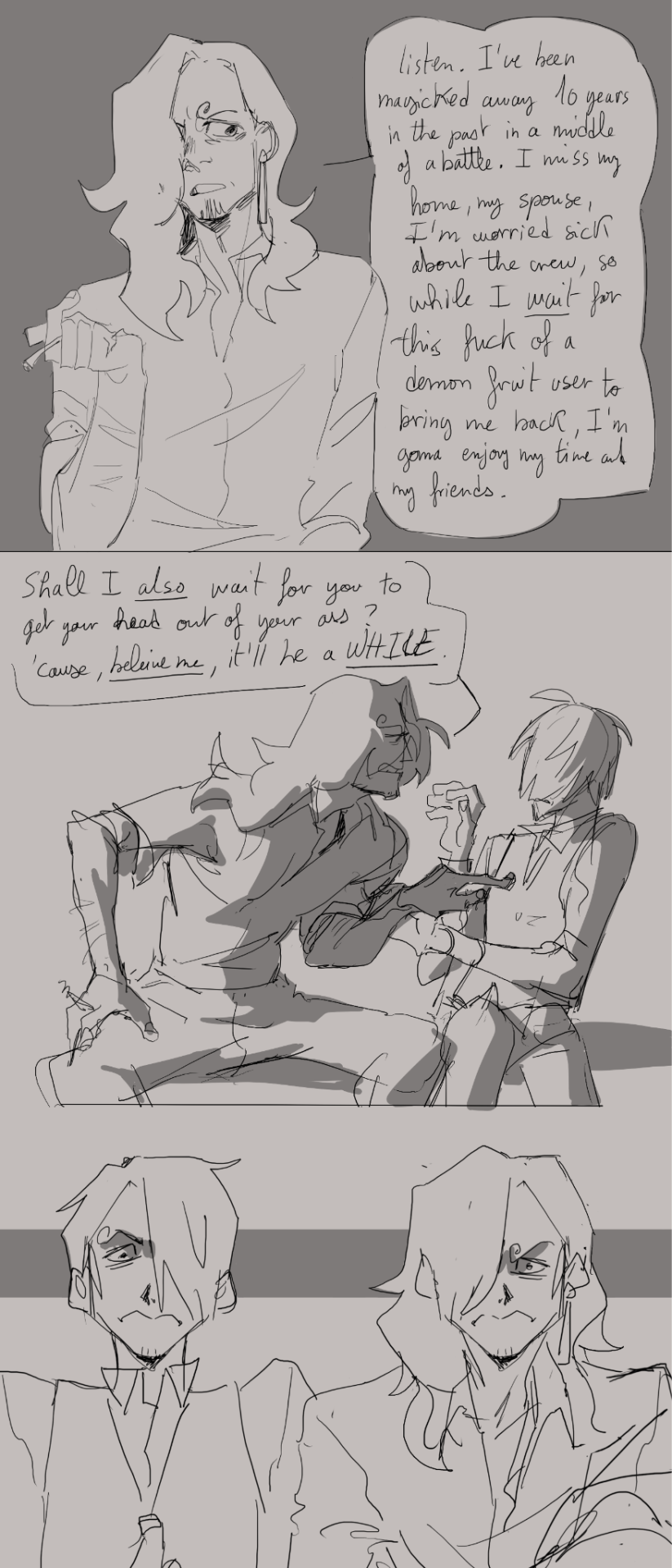



next
#art#artists on tumblr#digital art#op#one piece#zosan#time travel#sanji#sanji vinsmoke#black leg sanji#roronoa zoro#zoro#vinsmoke sanji#19 sanji is covk shamed while 30 sanji has his ussy facing the world
10K notes
·
View notes
Text



sketches bitches
I love those two dumbass divas so much <33333
#one piece#zosan#oufit 19#one piece zoro#roronoa zoro#zoro x sanji#sanji op#black leg sanji#vinsmoke sanji#op sanji#sanji#strawhats#one piece sanji#strawhat pirates#zoro#straw hats#artists on tumblr#digital art#drawing#sketch#zoro op
721 notes
·
View notes
Text
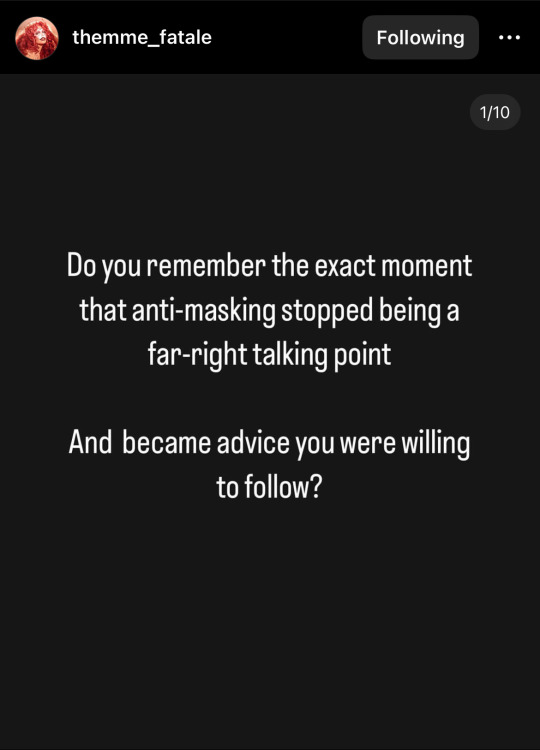
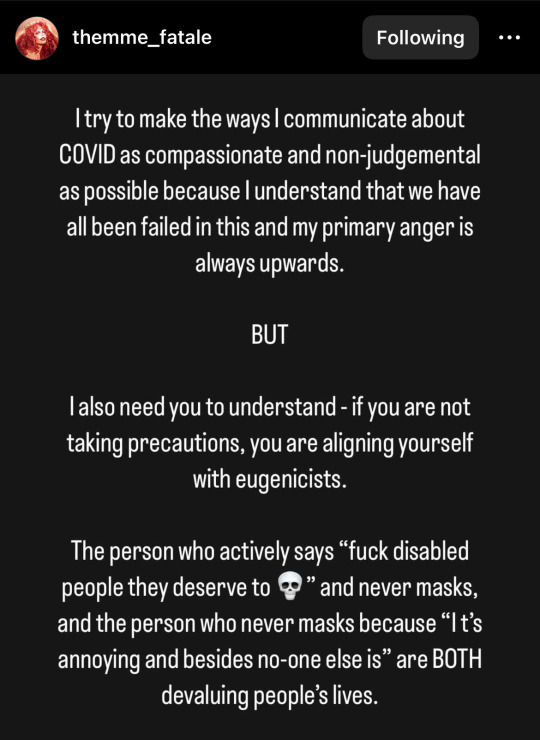

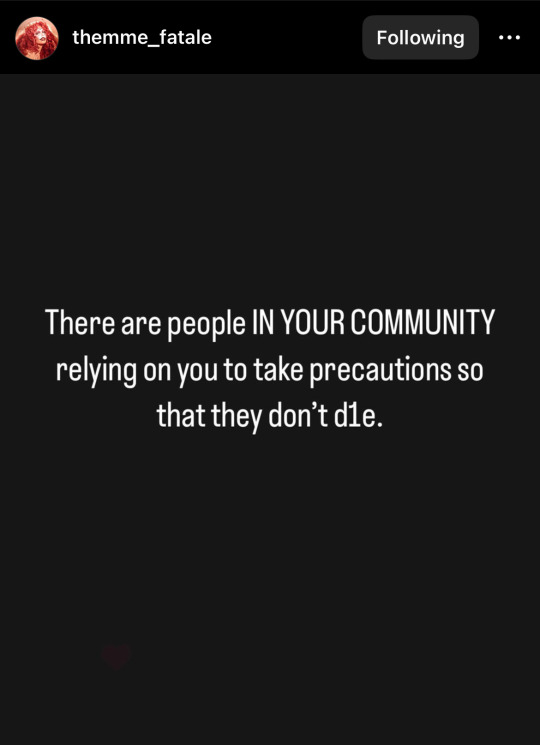
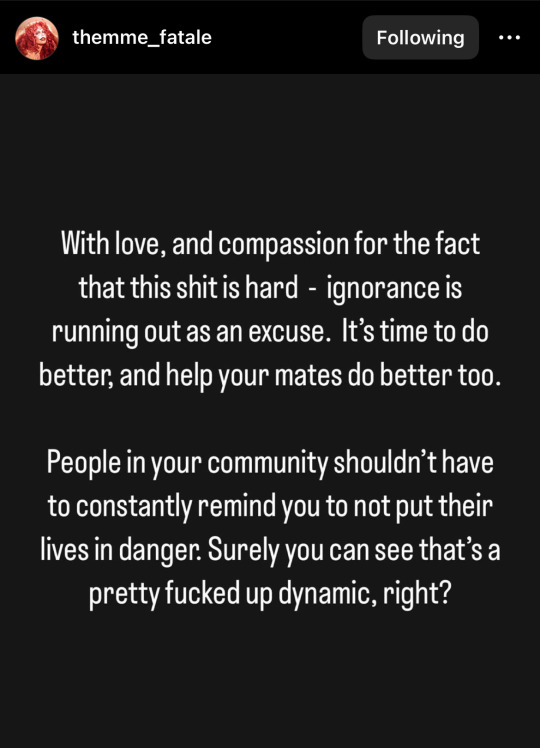
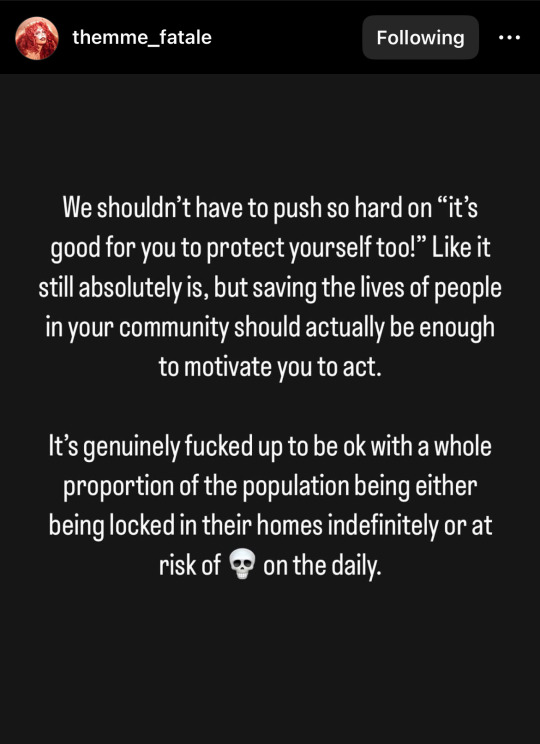
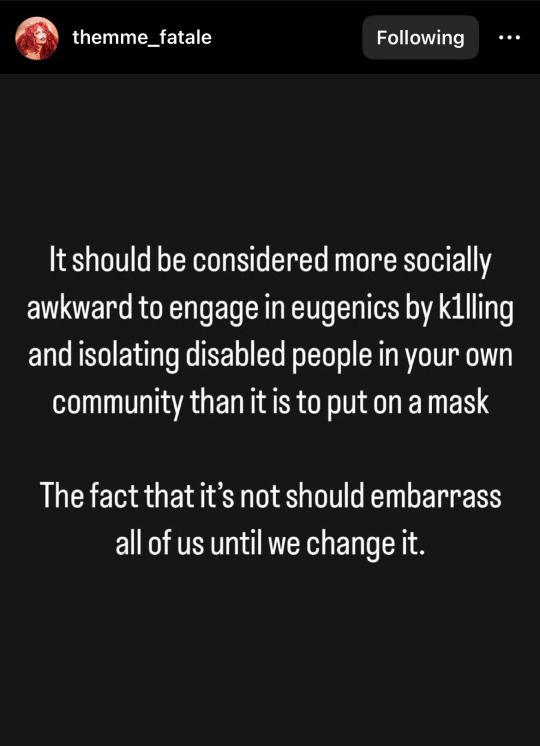
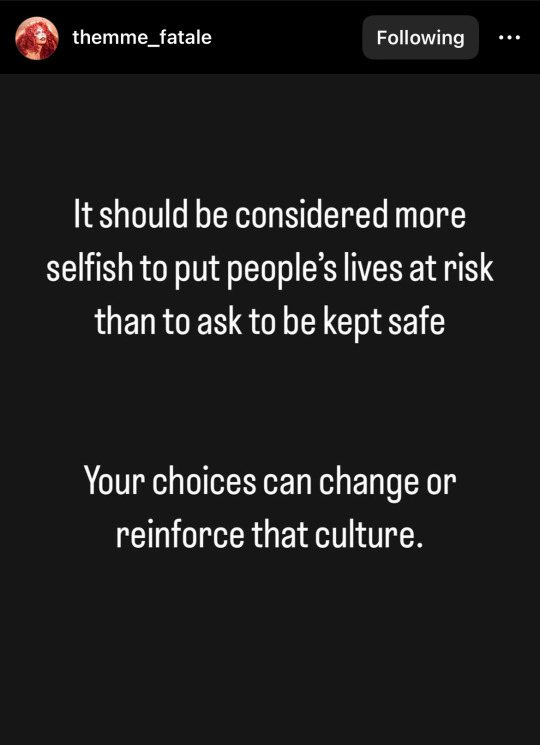


[Alt text] ten screenshots of text posts by the user themme_fatale on Instagram. The text reads:
(1/10)
Do you remember the exact moment that anti-masking stopped being a far-right talking point
And became advice you were willing to follow?
(2/10)
I try to make the ways I communicate about COVID as compassionate and non-judgemental as possible because I understand that we have all been failed in this and my primary anger is always upwards.
BUT
I also need you to understand - if you are not taking precautions, you are aligning yourself with eugenicists.
The person who actively says “fuck disabled people they deserve to 💀” and never masks, and the person who never masks because “It’s annoying and besides-no one else is” are BOTH devaluing people’s lives.
(3/10)
And that might feel confronting for some of you, and I know the knee-jerk reaction is probably going to be to deflect by accusing me of “shaming people” or whatever.
I’m not shaming anyone though - it’s just uncomfortable to sit with because if you’re the kind of person who follows me chances are you don’t actually want to be engaging in eugenics.
And re-engaging with the idea that COVID is not only still around, but still actively dangerous is asking a lot of you when the alternative is the comfort of denial.
Especially when so many of the tools to keep ourselves and each other safe have been taken away from us. But the thing is none of that is actually a reason not to act.
(4/10)
There are people IN YOUR COMMUNITY relying on you to take precautions so that they don’t d1e.
(5/10)
With love, and compassion for the fact that this shit is hard - ignorance is running out as an excuse. It’s time to do better, and help your mates do better too.
People in your community shouldn’t have to constantly remind you not to put their lives in danger. Surely you can see that’s a pretty fucked up dynamic, right?
(6/10)
We shouldn’t have to push so hard on “it’s good for you to protect yourself too!” Like it still absolutely is, but saving the lives of people in your community should actually be enough to motivate you to act.
It’s genuinely fucked up to be ok with a whole proportion of the population being either being locked in their homes indefinitely or at risk of 💀 on the daily.
(7/10)
It should be considered more socially awkward to engage in eugenics by k1lling and isolating disabled people in your own community than it is to put on a mask
The fact that it’s not should embarrass all of us until we change it.
(8/10)
It should be considered more selfish to put people’s lives at risk than to ask to be kept safe
Your choices can change or reinforce that culture.
(9/10)
Government inaction puts a weapon in your hand
Pretending it’s not there puts us all in danger
(10/10)
Why do you require a mandate to care about other people?
#it makes me nervous posting this#but the friends I have on here are some of the people I trust the most#like OP says#this is coming from a place of compassion#and as much as I want to be#we’re not don’t with covid yet#covid#covid 19#long covid#covid conscious#covid is airborne#covid isn't over
2K notes
·
View notes
Text
TRYING AGAIN WITH CLEARER WORDING. PLS READ BEFORE VOTING
*Meaning: When did you stop wearing a mask to a majority of your public activities? Wearing a mask when you feel sick or very rarely for specific events/reasons counts as “stopping”
[More Questions Here]
#poll#covid#covid 19#reblog for sample size#I could tag this post ‘environmental storytelling’ cause goddamn#if you reblogged the original please reblog this one#I just want my DATA#hey#excellent deminstration of the scientific process here#needing to correct for confusion on your participants end to get the results you want#can’t fix the tumblr sampling bias but apparently there’s anti-maskers here too#peoples life circumstance can vary so no judgement from me OP on when you stopped#unless you never masked. then I am judging you#like you didn’t even TRY?
624 notes
·
View notes
Text

i dont fully shade personal pieces that often but im glad i did it this time. happy holidays to everyone celebrating! enjoy this dot
274 notes
·
View notes
Text
THE FROG SCENE
#the apothecary diaries#kusuriya no hitorigoto#maomao#jinshi#lakan#apothecary diaries#apothecary diaries maomao#knh#knh episode 19#apothecary diaries spoilers#knh spoilers#neo queen serenity’s posts#jinmao#jinshi x maomao#maomao x jinshi#apothecary diaries jinshi#jinshi apothecary diaries#kusuriya anime#knh maomao#knh jinshi#knh manga#mao mao#tad#The APOTHECARY DIARIES#SEASON 2 COMES IN#JANUARY 10TH 2025!!!#THE APOTHECARY DIARIES S2 OP#“HYAKKA RYORAN” BY LILAS IKUTA REVEALED#薬屋2期
204 notes
·
View notes
Text
[FANART Zosan Modern Life AU]
"eat carefully, marimo~!"
Backstory: they're in a group project meeting with friends at a cafe.
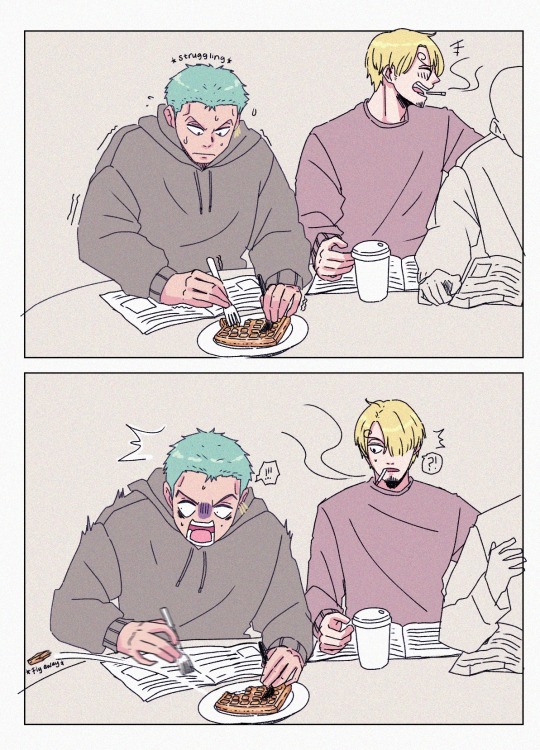

#zosan#zosan fanart#op zosan#zorosanji#zorosan#sanzo#zoro x sanji#one piece fanart#19 yo zosan#19yozs#opzsfanart
801 notes
·
View notes
Text
Based on the limited number of remaining davechella spots, it's unlikely we'll get a Dundy playlist, which is a shame because I personally would have loved to hear Daft Punk's Get Lucky 18 times in a row.
#Dundy Le Vesconte#The Terror#sidenote has anyone else noticed that the playlists seem to be getting shorter? or at least that there's quite a bit of variation in length#Here are the song counts for each playlist: Gibson - 19; Hartnell - 21; Collins - 18; Bridgens - 13; Tozer - 15#Maybe everyone else already noticed this and I was the last to realize when I checked to make this stupid joke lmao#but now that I see it I find it so interesting#Starky's text posts#Starky's Original Posts#''Hey OP you forgot about Hodgson'' look just. just scroll back a bit on the blog if youre curious i cant explain it sorry#''you forgot hodgson'' nellie. i am heathcliff.
128 notes
·
View notes
Text
BEST WLW SERIES OF 2024 Part 3
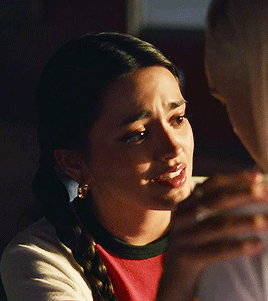
Pretty Little Liars Original Sin
youtube
The Decameron
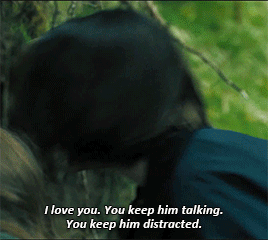
Vigil
youtube
Ayaka Is in Love with Hiroko!
youtube
Mhom Ped Sawan

Jurassic World: Chaos Theory
youtube
Unlock Your Love

STATION 19
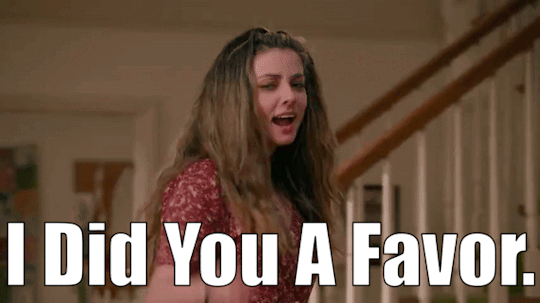
Ted

My Marvelous Dream is You
youtube
Anatomy Of Lies
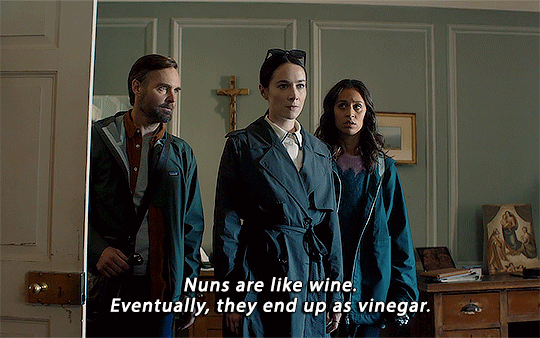
Bodkin

Special Ops lioness
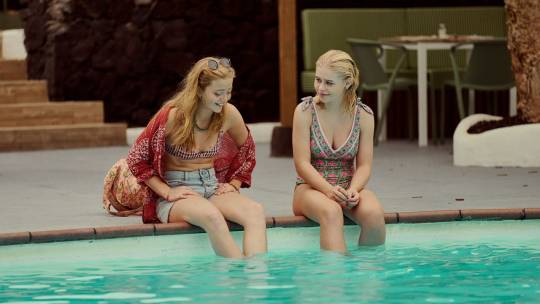
La Palma
#lesbian#gay#lgbt#lgbtq#wlw#bi#girls who like girls#lgbtqia#sapphic#tv#2024#2025#new year#pretty little liars original sin#the Decameron#vigil#station 19#Ayaka Is in Love with Hiroko!#Mhom Ped Sawan#Jurassic World: Chaos Theory#Unlock Your Love#ted 2024#My Marvelous Dream is You#yuri#lgbtq+#bisexual#Anatomy of Lies#bodkin#special ops: lioness#la palma
119 notes
·
View notes
Text
A vid of Louis and a mysterious blonde (Steve Durham) at Barney's Beanery in LA, 19 April 2024 x (looks like the same night as this x)
#op said she thinks it was end of last year#Oli was there too#are they sitting with fans?#Louis Tomlinson#Steve Durham#Barneys Beanery#LA#Louis vid#19 April 2024#mine
29 notes
·
View notes
Text
Ronance AU in which Robin loses her memory (most likely due to some mind flayer shenanigans) and she's kinda back at age 15, still heavily in denial about her sexuality, and Nancy's heart breaks because she wants nothing more than to comfort and take care of her sweet girlfriend, but Robin not only does not remember, but Nancy's insistance that they were in love scares her. She avoids her.
Bonus points if they were highly secretive about their relationship and no one knew, not even Steve, so Nancy is completely alone in her struggle. No one knew the truth. Only she remembers. Feels an awful lot like being the only survivor. She just wants her love back
#ronance#my posts#robin buckley#nancy wheeler#to clarify. robin isn't like 15 mentally more like she doesn't remember almost anything past that age#but they're both like 19#but !! she's so different! gone is the confidence! the openess! the trust!#she's back at her worst moment!#:D
82 notes
·
View notes
Text
Common Symptoms Were Fatigue and Decreased Exercise Tolerance, According to a 2022 Survey
Inequities In the Prevalence and Severity of Symptoms Observed Across Race, Ethnicity, Gender, and Neighborhood Poverty
December 26, 2024 — Today, the New York City Health Department announced that 80 percent of adult New Yorkers infected with COVID-19 who were surveyed experienced at least one symptom lasting one month or longer. According to the results of the COVID-19 Experiences Survey in 2022, the most common symptoms were fatigue and decreased exercise tolerance. While post-acute symptoms may resolve within 12 weeks, many people will go on to develop Long COVID, an infection-associated chronic condition characterized by symptoms lasting three months or longer.
“This survey shows us that the symptoms following COVID-19 infections are a significant public health issue for New Yorkers. Black and Latino communities, women, transgender people, and those living in low-income neighborhoods were more likely to have symptoms, highlighting the disproportionate impact of the pandemic on marginalized communities,” said Acting Health Commissioner Dr. Michelle Morse. “We must invest in a comprehensive long-term response to the COVID-19 pandemic that focuses on prevention through engagement with health care providers and community members. Services for people experiencing the long-term physical, mental, social, and economic impacts of COVID-19 infection should be accessible to all.”
Post-acute symptoms are those that last one month or longer. To better understand experiences of COVID-19 post-acute symptoms, the Health Department conducted the COVID-19 Experiences Survey in November and December 2022. Adult New Yorkers who were members of the probability-based NYC Health Panel were invited to take the survey if they had confirmed or suspected COVID-19; 2,081 people completed the survey online or by phone in English, Spanish, Russian, Simplified Chinese, or Traditional Chinese. The results provide insight into how post-acute symptoms relate to health care seeking, social and demographic factors, disability, and mental health.
Some respondents reported many symptoms at different levels of severity, while others reported few symptoms, only mild symptoms, or none at all. Inequities in the prevalence and severity of post-acute symptoms after COVID-19 were observed across race/ethnicity, gender, and neighborhood poverty levels.
The prevalence of mild symptoms was similar across socio-demographic groups.
Moderate symptoms were more prevalent among Latino and Asian/Pacific Islander adults compared with white adults, and among people living in high poverty neighborhoods compared with people in low poverty neighborhoods.
Severe symptoms were more prevalent among women and transgender or non-binary adults compared with men, among Latino and Black adults compared with white adults, and among people living in very high and high poverty neighborhoods compared with low poverty neighborhoods.
Increasing symptom severity was associated with activity limitations and depression. Those with at least one severe symptom were more likely to report activity limitations compared with those who reported no post-acute symptoms (60 percent vs. 6 percent), which may result in social, economic, and mental health difficulties.
People with at least one severe post-acute symptom reported 10 days of reduced ability or complete inability to carry out usual activities or work in the past month, compared with 6 days for moderate symptoms, 3 days for mild symptoms, and 1 day for no symptoms.
One in three adults (33 percent) with at least one severe post-acute symptom after COVID-19 had probable depression, higher than those reporting only mild symptoms (6 percent) or no symptoms (2 percent).
Black and Latino New Yorkers, women, transgender adults, and those living in low-income neighborhoods were most likely to report severe symptoms, reflecting the disproportionate impact of the ongoing pandemic in these communities.
To address inequities in awareness about the long-term health impacts of COVID-19 and the importance of preventing new infections, the NYC Health Department partners with community and faith-based organizations to serve as trusted messengers and provide tailored and culturally resonant public health outreach to NYC communities.
Anyone can become very sick from COVID-19. To find a COVID-19 or flu vaccination site, visit nyc.gov/vaccinefinder or call 212-COVID-19 (212-268-4319).
#031-24
MEDIA CONTACT: Chantal Gomez [email protected]
Gomez, Chantal. “Health Department Finds Most Adult New Yorkers Infected with COVID-19 Experienced Symptoms Lasting One Month or Longer.” Health Dept. Finds Most Adult NYers Infected With COVID-19 Experienced Symptoms Lasting 1 Mo or Longer - NYC Health, NYC Health, 26 Dec. 2024, www.nyc.gov/site/doh/about/press/pr2024/nyc-adults-with-covid-19-experienced-symptoms-one-month-or-longer.page.
I’d like to highlight that date: December 26, 2024.
#op#links#usa#nyc#public health#covid#long covid#covid-19#sars-cov-2#sars cov 2#covid19#covid 19#long covid awareness#covid isn't over#still coviding#covid conscious#pandemic#coronavirus#covid pandemic#coronavirus pandemic#infectious disease#infectious diseases#disability#chronic illness#post-acute covid-19#covid cautious
50 notes
·
View notes
Text

did a redraw/drawover of that one peridot screenshot for funsies since i couldnt decide what to draw
141 notes
·
View notes
Text

JinMao & the frog 🐸
#the apothecary diaries#kusuriya no hitorigoto#maomao#jinshi#lakan#apothecary diaries#apothecary diaries maomao#knh#knh episode 19#apothecary diaries spoilers#knh spoilers#neo queen serenity’s posts#jinmao#jinshi x maomao#maomao x jinshi#apothecary diaries jinshi#jinshi apothecary diaries#kusuriya anime#knh maomao#knh jinshi#knh manga#mao mao#tad#The APOTHECARY DIARIES#SEASON 2 COMES IN#JANUARY 10TH 2025!!!#THE APOTHECARY DIARIES S2 OP#“HYAKKA RYORAN” BY LILAS IKUTA REVEALED#薬屋2期
73 notes
·
View notes
Text
where do i find a graph showing COVID stats (preferably wastewater, but hospitalizations and deaths and whatnot would be useful too) over the past several years? maybe even all the way back to 2020? please? when you only see a few months at a time, it's hard to put into perspective in the grand scheme of things.
#op#covid#covid tracking#covid-19#covid cautious#covid conscious#covid realistic#covid 19#covid awareness#covid careful#covid is not over#covid is still a thing#covid is still here#covid isn't over#covid kills#covid19#zero covid#sars cov 2#still coviding#covid safe#sars-cov-2#sorry for the tag spam#i want as high a chance as possible that i get a good answer
23 notes
·
View notes